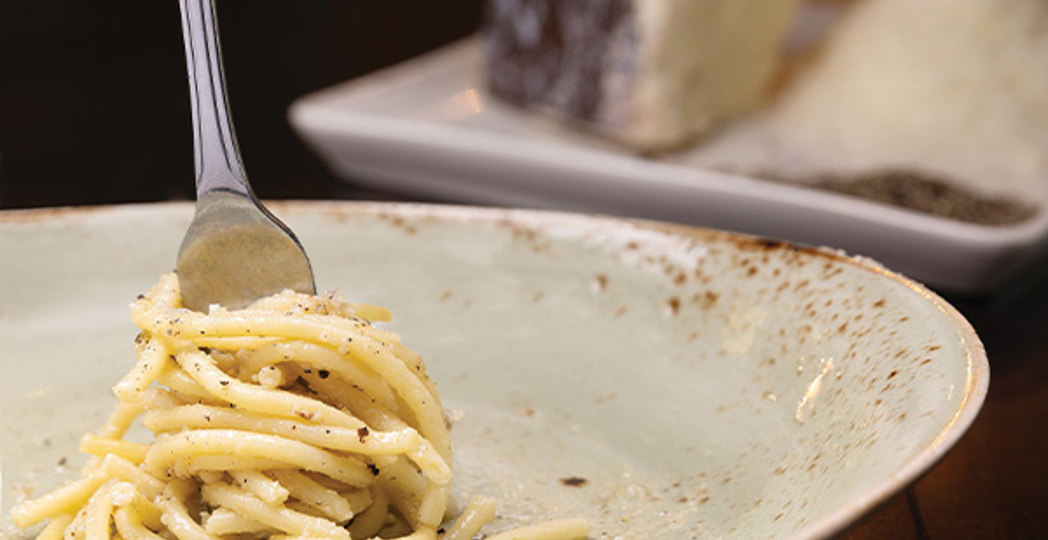Discover the East Side's Best Italian Restaurant
by Lynne Thompson. | Jul. 28, 2023 | 1:00 PM

Matthew Greene
Best Italian: M Italian
Cacio e pepe only requires a few ingredients to make — the name of the classic Roman pasta dish translates to “cheese and pepper.” And that’s what makes it so good, according to Tony Rotello, director of culinary for M Italian’s Chagrin Falls-based owner Monven Group. Its popularity among American diners, ordered as a shared course served before the entree or as the entree itself, has increased over the last three years, prompting Rotello to add it to the restaurant’s menu in February.
“It’s so delicious you’d think there’s more to it,” he says. “Italian food, traditionally,
is simple ingredients, but high-quality ingredients — and not a lot of them.”
The pasta. M Italian uses bucatini, which he describes as a thick, long, spaghetti-like variant with a hole through it. “Basically, it’s hollow,” he says. “As the sauce gets incorporated, it can fill in the holes of the long-cooked pasta, which makes it that much more flavorful.”
The freshly cracked black pepper. Rotello explains that grinding peppercorns in a peppermill right before using produces pepper that is much stronger in flavor than a pre-ground counterpart. Toasting it in extra-virgin olive oil over medium heat in a saute pan while the bucatini cooks, he adds, releases the pepper’s natural oils. “Once drawn out into the oil that you’re going to use to complete your sauce, every bite has that peppery taste.”
The unsalted butter. M Italian adds a tablespoon per serving. “Butter is a multiplying agent,” Rotello says. “Once we get ready to add the pasta water, it will blend everything to a creamy texture.”
The pasta water. Rinse pasta in cold water and pour the water in which it was prepared down the drain, Rotello warns, and you lose the starch released as it cooked. “It’s the starch in the pasta that is a binder for the sauce” and helps make it creamy, he explains. M Italian reserves three ounces of that salted water per serving — he goes so far as to call it “liquid gold” — to add, along with the strained-but-unrinsed bucatini, to the “layers of flavor” he’s building in the saute pan.
The freshly grated pecorino Romano. Rotello observes that the sheep’s-milk cheese is “stronger, more pungent” and saltier than parmesan. The recipe M Italian uses calls for a whopping 3.5 ounces per serving for the sauce. “Because the cheese will be the thing that really tightens it up, [the pasta] will actually twist and get a little height on it,” he says.
M Italian, 22 W. Orange St., Chagrin Falls, 440-247-7474, mitalian.com
Trending
-
1
-
2
-
3
-
4
-
5










